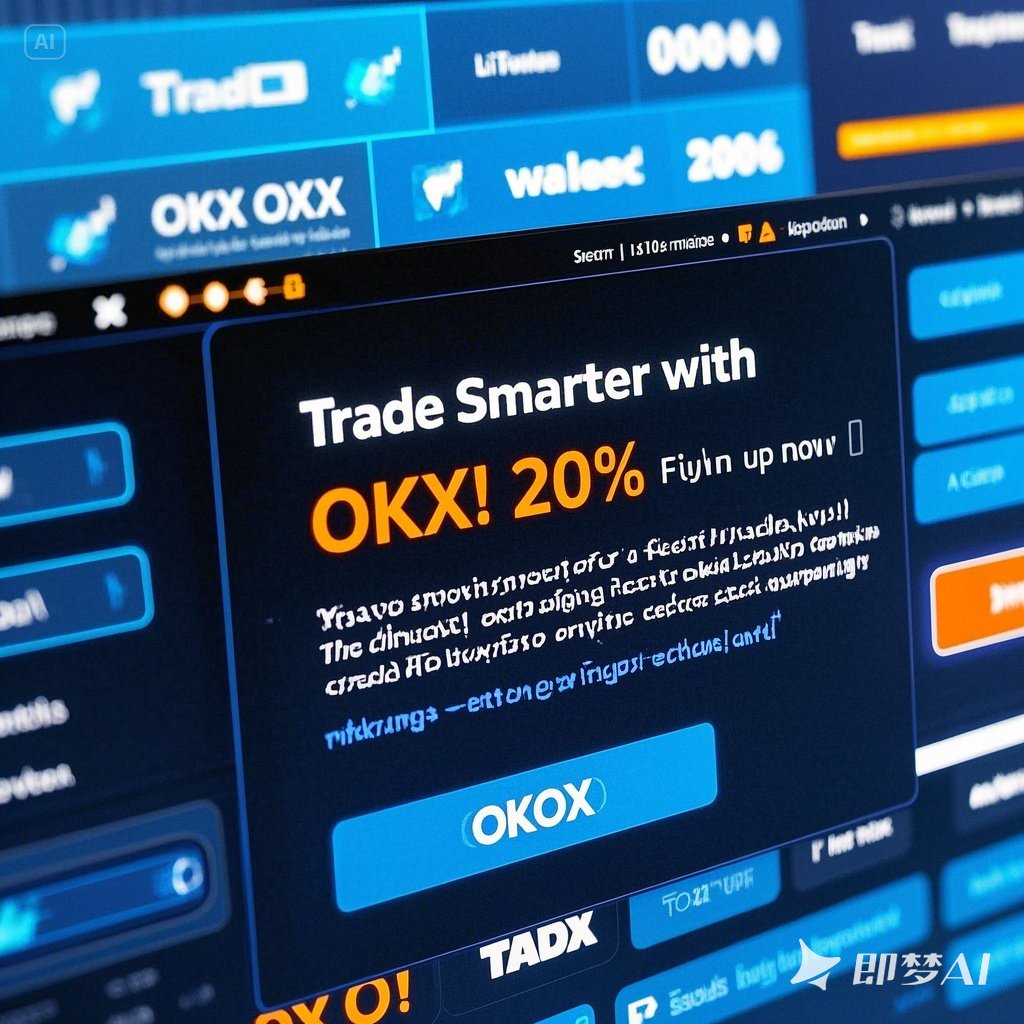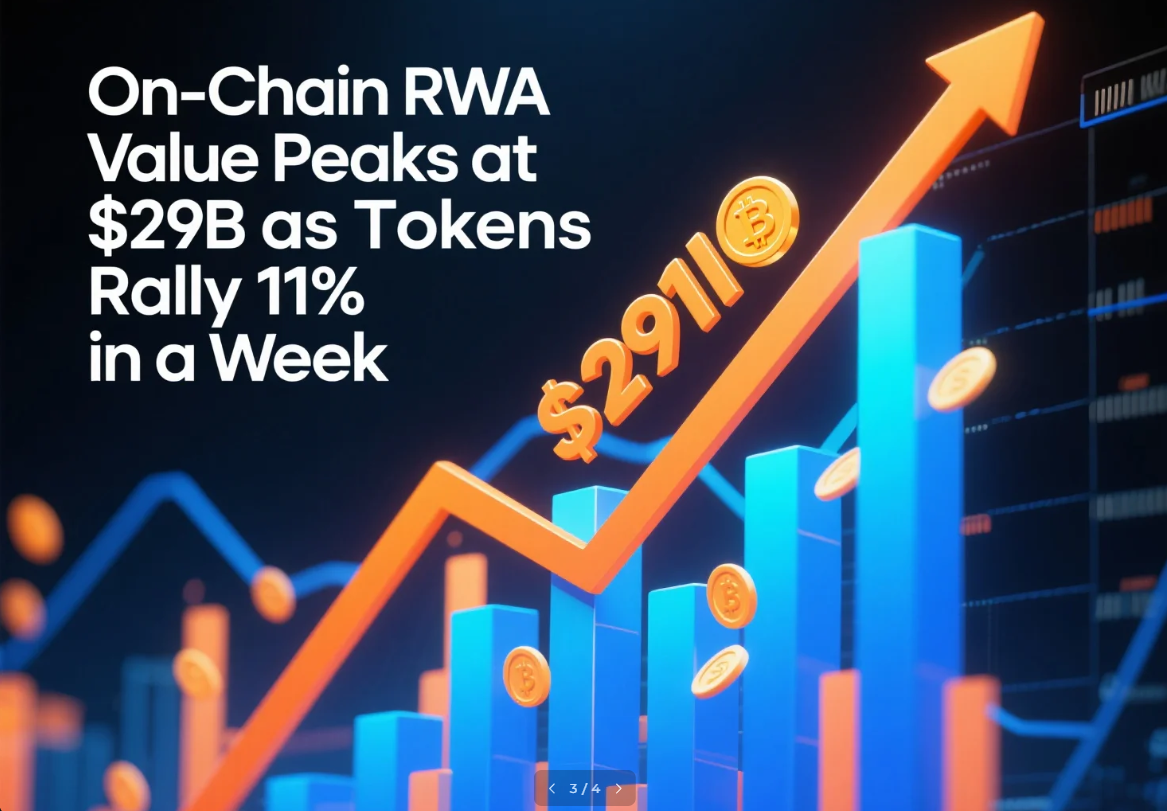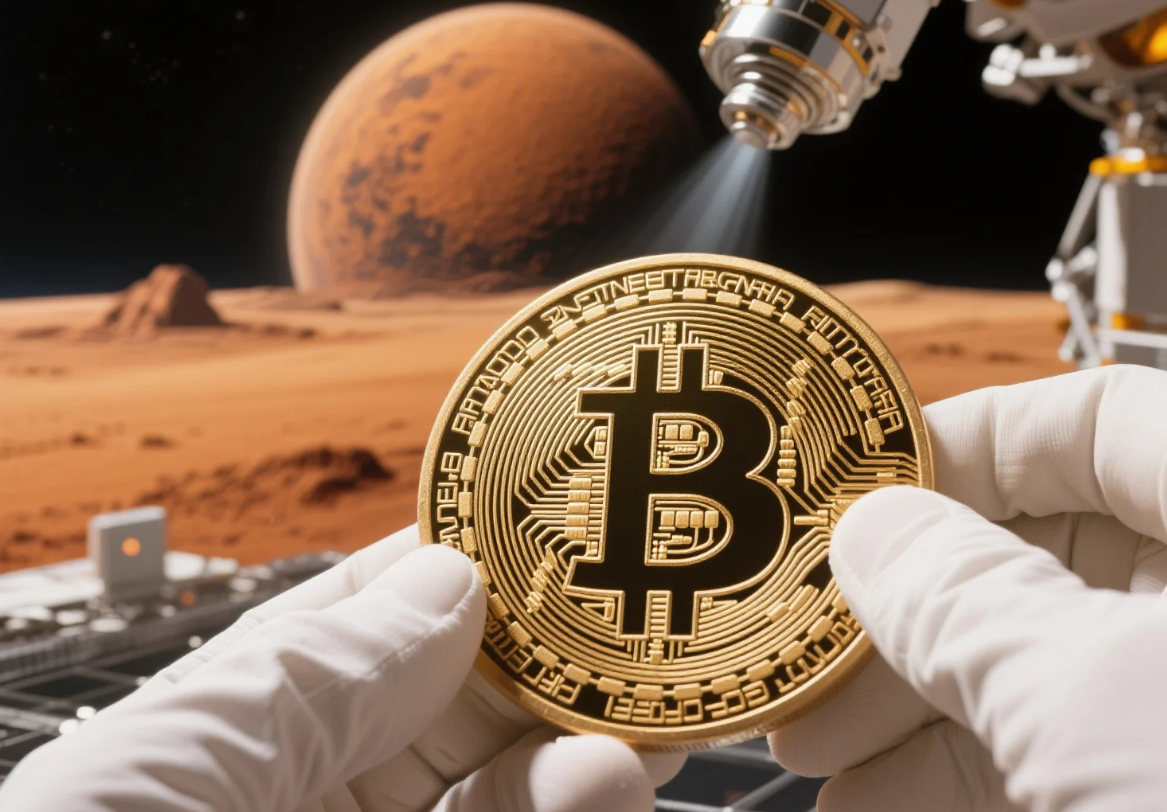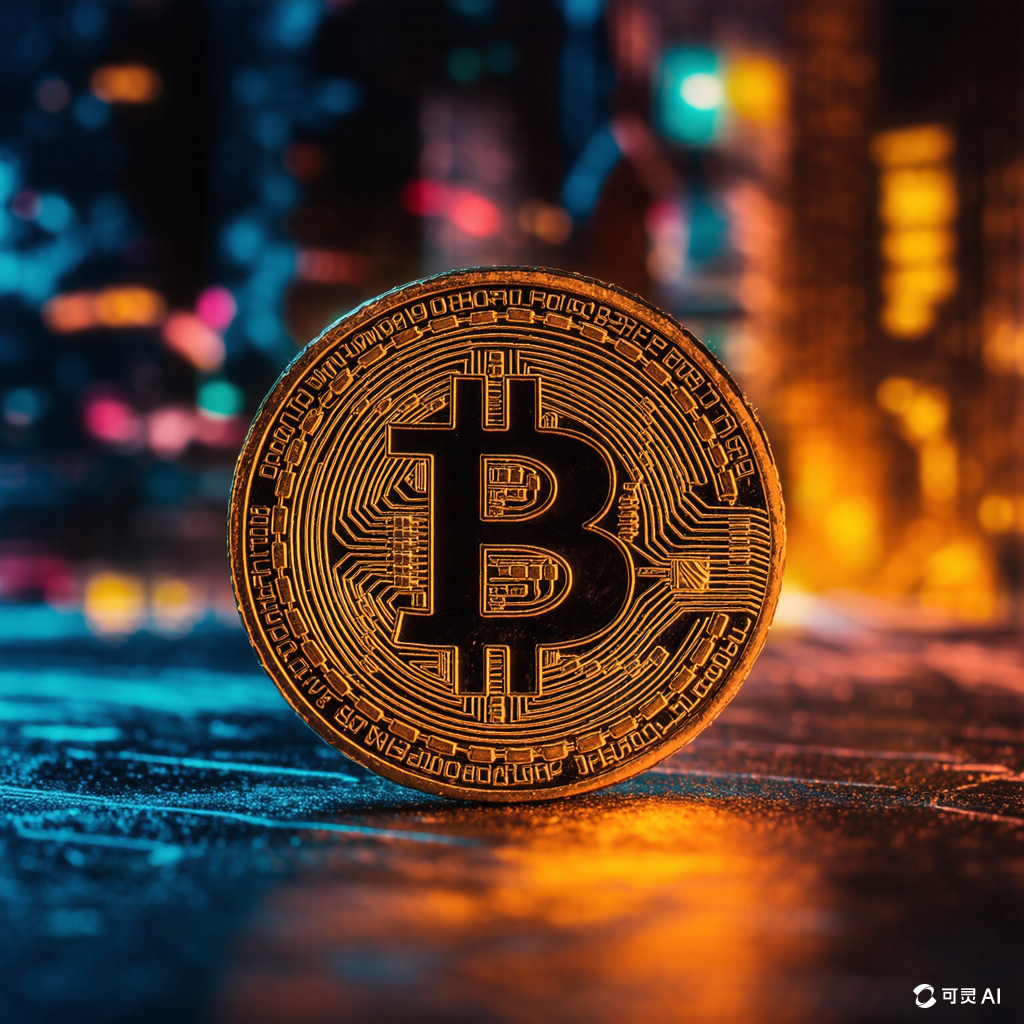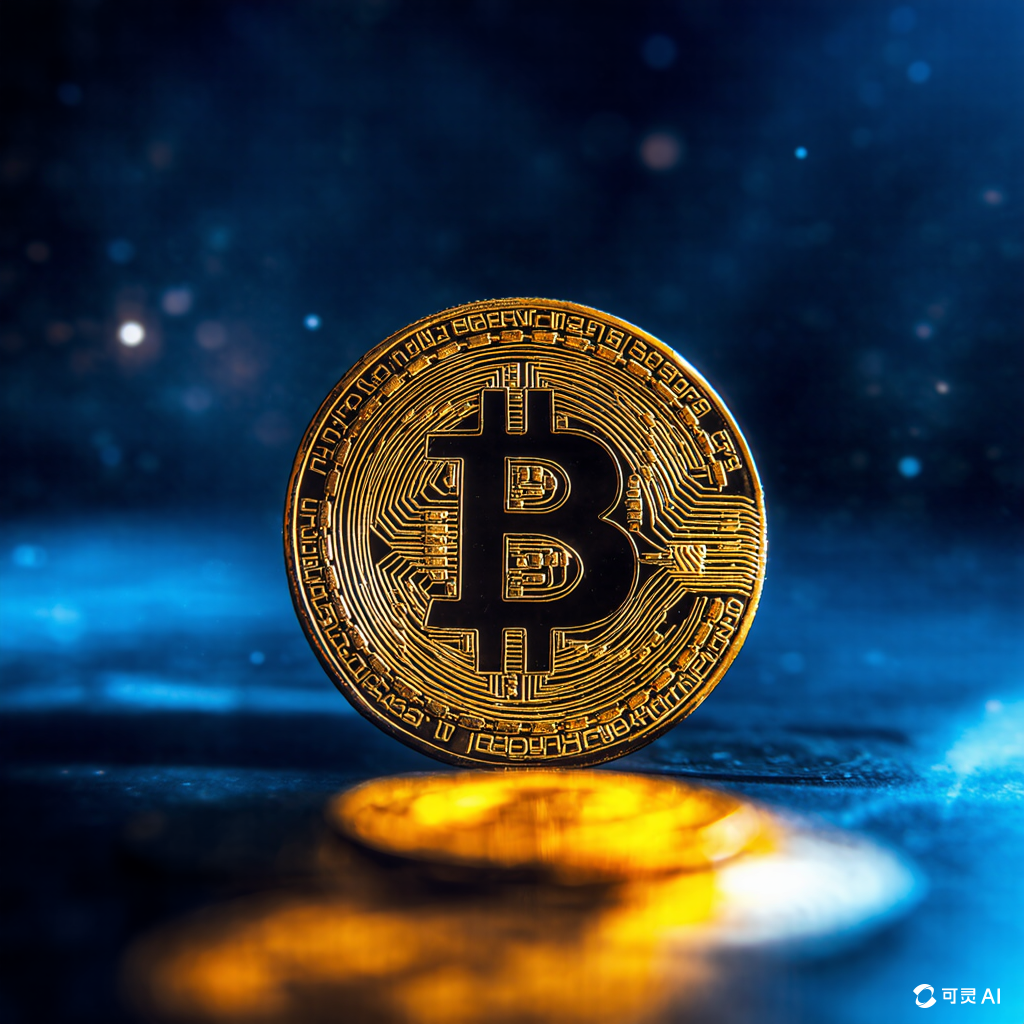Silver Price Forecast: When Will the Next Rally Begin? Key Catalyst Needed to Break $35.40 Resistance | FXEmpire
Don’t just sign up — trade smarter and save 20% with referral codes: Binance WZ9KD49N / OKX 26021839
What is Silver (XAG) and how is it traded?
What is Silver (XAG) and How is it Traded?
Silver, represented by the ticker symbol XAG, is a precious metal that has been used for centuries as a store of value, currency, and in various industrial applications. Like gold (XAU), silver is often considered a hedge against inflation and economic uncertainty. However, its unique properties and broader use in manufacturing make it distinct from other precious metals.
Understanding Silver (XAG)
Silver is a chemical element with the symbol Ag, derived from the Latin word “argentum.” It is one of the most conductive metals, known for its high reflectivity, malleability, and antibacterial properties. Beyond its traditional role in jewelry and coinage, silver is extensively used in electronics, solar panels, medical devices, and even in the production of photographic film.
The price of silver is influenced by a combination of factors, including industrial demand, supply from mining operations, investment flows, and macroeconomic conditions. Unlike gold, which is often viewed purely as an investment, silver has a more complex market dynamic due to its dual role as both an industrial commodity and a financial asset.
How is Silver Traded?
Silver can be traded through various financial instruments, making it accessible to both retail and institutional investors. Here are some of the most common ways to trade silver:
1. Physical Silver
Investors can purchase physical silver in the form of bars, coins, or rounds. These are typically bought from bullion dealers, banks, or online platforms. Physical silver is stored in secure locations, either at home or in a vault. While this method offers direct ownership, it comes with additional costs such as storage, insurance, and transaction fees.
2. Silver ETFs
Exchange-Traded Funds (ETFs) provide a convenient way to gain exposure to silver without owning the physical metal. These funds track the price of silver and are traded on stock exchanges like regular stocks. Popular silver ETFs include the iShares Silver Trust (SLV) and the Sprott Physical Silver Trust (PSLV). ETFs offer liquidity, ease of trading, and lower barriers to entry compared to physical silver.
3. Futures Contracts
Silver futures are standardized contracts traded on commodities exchanges such as the COMEX (a division of the New York Mercantile Exchange). These contracts allow traders to buy or sell a specific amount of silver at a predetermined price and future date. Futures are commonly used for hedging or speculation and require a margin account.
4. CFDs (Contracts for Difference)
CFDs are derivative products that allow investors to speculate on the price movement of silver without owning the underlying asset. They are offered by many online brokers and are popular among traders who want to profit from both rising and falling prices. CFDs involve leverage, which can amplify both gains and losses.
5. Mining Stocks
Investors can also gain exposure to silver by investing in companies involved in its mining and production. Stocks of silver mining firms, such as Pan American Silver or Wheaton Precious Metals, can be traded on major stock exchanges. The performance of these stocks is influenced not only by the price of silver but also by company-specific factors like production levels and operational efficiency.
Key Factors Affecting Silver Prices
Several factors influence the price of silver:
Industrial Demand: As a critical component in electronics and renewable energy technologies, silver’s price is closely tied to global industrial activity. Supply and Production: Mining output, geopolitical issues affecting supply chains, and environmental regulations can impact the availability of silver. Investment Demand: Increased interest from investors, especially during times of economic instability, can drive up the price of silver. Macroeconomic Conditions: Inflation, interest rates, and currency fluctuations all play a role in determining the value of silver. Market Sentiment: Speculation and investor sentiment can cause short-term volatility in silver prices.
Conclusion
Silver (XAG) remains a valuable asset in both the industrial and financial sectors. Whether through physical ownership, ETFs, futures, or mining stocks, there are multiple ways to participate in the silver market. Understanding the factors that influence its price and choosing the right trading method can help investors make informed decisions in this dynamic and historically significant market.
Understanding Silver Price Movements
Understanding Silver Price Movements
Silver, like other precious metals, is influenced by a complex interplay of economic, geopolitical, and market factors. Understanding these dynamics can help investors and traders make informed decisions about their silver investments. While gold often takes the spotlight in discussions about precious metals, silver has its own unique characteristics that affect its price movements.
Economic Indicators and Silver Prices
One of the primary drivers of silver prices is the overall health of the global economy. During periods of economic growth, industrial demand for silver tends to rise due to its use in electronics, solar panels, and other high-tech applications. This increased demand can push silver prices higher. Conversely, during economic downturns or recessions, industrial activity may slow, leading to lower demand and, consequently, lower silver prices.
Interest rates also play a significant role in silver’s value. When central banks raise interest rates, it often leads to a stronger currency (such as the U.S. dollar), which can make silver more expensive for holders of other currencies. This can result in decreased demand and downward pressure on silver prices. On the flip side, lower interest rates can weaken the dollar, making silver more attractive to international buyers and potentially driving up its price.
Geopolitical Events and Market Sentiment
Geopolitical tensions, such as wars, trade disputes, or political instability, can significantly impact silver prices. In times of uncertainty, investors often turn to safe-haven assets like silver to protect their wealth. This increased demand from risk-averse investors can lead to a surge in silver prices.
Market sentiment also plays a crucial role. News events, such as changes in government policies, technological advancements, or shifts in energy markets, can influence how investors perceive the future value of silver. For example, the growing adoption of renewable energy technologies, particularly solar power, has increased the demand for silver in photovoltaic cells, contributing to price volatility.
Supply and Demand Dynamics
The supply and demand balance is a fundamental factor in determining the price of any commodity, including silver. Mining production, recycling efforts, and changes in industrial usage all affect the supply side. On the demand side, factors such as jewelry manufacturing, investment demand (through ETFs or physical bullion), and industrial consumption are key influencers.
It’s also important to note that silver is often traded alongside gold. While both metals are considered safe havens, they can behave differently based on market conditions. For instance, during periods of inflation, both gold and silver may perform well, but silver’s industrial demand can make it more sensitive to economic cycles than gold.
Investor Behavior and Speculation
Speculative trading and investor behavior can cause short-term fluctuations in silver prices. Large institutional investors, hedge funds, and retail traders often buy or sell silver based on technical analysis, market trends, or macroeconomic forecasts. These actions can create rapid price movements that may not always reflect the underlying fundamentals of the metal.
Additionally, the rise of digital platforms and cryptocurrency has introduced new ways for investors to gain exposure to silver. Silver-backed cryptocurrencies and tokenized silver assets have emerged as alternative investment vehicles, further influencing market dynamics and price movements.
Conclusion
Understanding silver price movements requires a comprehensive analysis of economic indicators, geopolitical events, supply and demand dynamics, and investor behavior. As with any investment, it’s essential to stay informed and consider multiple factors when evaluating the potential risks and rewards of investing in silver. Whether you’re an experienced trader or a beginner, gaining insight into these drivers can help you navigate the complexities of the silver market with greater confidence.
Key Factors Influencing Silver Prices
Key Factors Influencing Silver Prices
Like other precious metals, the price of silver is influenced by a complex interplay of economic, industrial, and geopolitical factors. Understanding these key drivers can help investors and traders make informed decisions in the silver market. Below are the primary elements that shape the price of silver:
1. Industrial Demand
One of the most significant factors affecting silver prices is its use in various industries. Silver is a critical component in electronics, solar panels, medical devices, and even in the production of photographic film. As technology advances and global demand for renewable energy sources increases, the need for silver in industrial applications continues to grow. A surge in manufacturing activity or innovation in green technology can lead to increased demand, pushing silver prices higher.
2. Investment Demand
Investors often turn to silver as a hedge against inflation or economic uncertainty. Similar to gold, silver is viewed as a store of value and a diversification tool in investment portfolios. When financial markets are volatile or when central banks increase money supply, the demand for silver as an investment tends to rise. Additionally, the popularity of silver ETFs (Exchange-Traded Funds) and physical silver products like coins and bars can significantly impact its price.
3. Supply and Mining Production
The availability of silver in the market is largely determined by mining production and recycling activities. Silver is often a byproduct of mining operations for other metals such as copper, lead, and zinc. Therefore, fluctuations in the production of these primary metals can affect the supply of silver. If mining output decreases due to geopolitical issues, labor strikes, or environmental regulations, the limited supply can drive up silver prices.
4. Inflation and Currency Strength
Historically, silver has performed well during periods of high inflation. As the value of fiat currencies declines, investors tend to seek assets that retain their value over time. The U.S. dollar’s strength also plays a role—when the dollar weakens, silver prices often rise because it becomes cheaper for holders of other currencies to buy silver. Conversely, a strong dollar can put downward pressure on silver prices.
5. Geopolitical and Economic Events
Global events such as wars, political instability, and economic crises can influence silver prices. During times of uncertainty, investors may flock to precious metals as a safe haven. For example, during the 2008 financial crisis, silver prices saw significant increases as investors sought alternatives to traditional financial assets. Similarly, trade tensions or conflicts in major silver-producing regions can disrupt supply chains and cause price volatility.
6. Central Bank Policies and Interest Rates
Central bank actions, particularly changes in interest rates, have a direct impact on the price of silver. Higher interest rates typically reduce the appeal of non-yielding assets like silver, as investors may prefer bonds or other interest-bearing instruments. On the other hand, lower interest rates or quantitative easing can boost demand for silver as an alternative investment. Additionally, central banks’ monetary policies can influence currency values, which in turn affect silver prices.
7. Speculation and Market Sentiment
Speculative trading and market sentiment play a crucial role in short-term silver price movements. Traders and hedge funds often speculate on the future direction of silver prices based on technical analysis, economic indicators, and news events. Strong positive sentiment or rumors of increased demand can cause rapid price increases, while negative sentiment can lead to sharp declines. This factor is especially prominent in the futures market, where large positions can influence price trends.
Understanding these key factors allows investors to better navigate the silver market and anticipate potential price movements. While no single factor dominates all scenarios, a combination of these elements typically determines the trajectory of silver prices over time.
The Role of Market Sentiment in Silver Trading
The Role of Market Sentiment in Silver Trading
Market sentiment plays a crucial role in the dynamics of silver trading, influencing price movements and investment decisions. Unlike fundamental analysis, which focuses on economic indicators, supply and demand, and industrial usage, market sentiment reflects the collective emotions and perceptions of traders and investors toward the silver market. These sentiments can be driven by a variety of factors, including macroeconomic conditions, geopolitical events, technological advancements, and even social media trends.
Investors often use sentiment analysis to gauge whether the market is bullish (optimistic) or bearish (pessimistic). In the context of silver, a positive sentiment may arise from expectations of increased industrial demand, inflationary pressures, or government stimulus measures that support precious metals. Conversely, a negative sentiment might be triggered by economic stability, reduced industrial activity, or a strong U.S. dollar, which can make silver less attractive as an alternative investment.
One of the key tools used to measure market sentiment is the Commitment of Traders (COT) report, published by the Commodity Futures Trading Commission (CFTC). This report provides insights into the positions held by different types of traders—such as commercial hedgers, institutional investors, and retail traders—offering a snapshot of the overall market mood. For example, if a large number of commercial traders are shorting silver, it could signal a potential price increase if those positions are unwound.
Social media and online forums have also become significant drivers of market sentiment in recent years. Platforms like Twitter, Reddit, and cryptocurrency communities often influence public perception and investor behavior. The “meme stock” phenomenon, for instance, has shown how retail investors can collectively drive up the price of assets based on shared enthusiasm or narratives, regardless of traditional fundamentals. While this is more commonly associated with stocks, similar dynamics can occur in the silver market, especially when influenced by viral content or trending discussions.
Moreover, silver is often viewed as a hedge against inflation and currency devaluation. During times of economic uncertainty, such as periods of high inflation or geopolitical instability, market sentiment tends to favor precious metals. Investors may shift their portfolios toward silver to protect their wealth, which can lead to increased demand and rising prices. However, if confidence in the economy improves or central banks implement policies that stabilize currencies, sentiment may turn negative, leading to selling pressure.
It’s important for traders and investors to understand that market sentiment is not always aligned with fundamentals. Sometimes, sentiment can drive prices away from intrinsic value for extended periods, creating opportunities for both profit and risk. Therefore, combining sentiment analysis with fundamental and technical analysis can provide a more comprehensive view of the silver market.
In conclusion, market sentiment is a powerful force in silver trading. It shapes the behavior of participants, influences price trends, and can create both opportunities and challenges for investors. By staying informed about market sentiment and its underlying drivers, traders can make more informed decisions and navigate the complexities of the silver market with greater confidence.
What is a Silver Rally and How Does It Happen?
What is a Silver Rally and How Does It Happen?
A silver rally refers to a significant and rapid increase in the price of silver, often driven by a combination of market forces, investor sentiment, and macroeconomic factors. While silver is a precious metal like gold, it has unique characteristics that make its price movements distinct. A silver rally can occur over a short period, sometimes within days or weeks, and can be influenced by both fundamental and speculative factors.
Understanding the Basics of Silver
Silver is a commodity with dual uses: industrial and monetary. It is widely used in manufacturing, electronics, solar panels, and medical devices due to its excellent conductivity and reflectivity. At the same time, it is also considered a store of value and a hedge against inflation, much like gold. This dual nature makes silver particularly sensitive to changes in economic conditions, supply and demand dynamics, and investor behavior.
What Triggers a Silver Rally?
A silver rally typically occurs when there is an increase in demand for silver, either from industrial sectors or from investors seeking protection against economic uncertainty. Several key factors can trigger such a rally:
Economic Uncertainty: During times of geopolitical instability, inflation, or financial crises, investors often turn to precious metals as a safe haven. This increased demand can push up the price of silver. Monetary Policy Shifts: Central bank actions, such as interest rate changes or quantitative easing, can influence the value of fiat currencies. When the value of paper money declines, the demand for silver as an alternative store of value may rise. Supply Constraints: If there is a disruption in silver mining or refining, or if there is a shortage of recycled silver, the limited supply can lead to higher prices. Speculative Activity: Institutional investors, hedge funds, and retail traders may buy silver futures or exchange-traded products (ETPs), driving up the price through increased speculation. Industrial Demand: An uptick in industrial activity, especially in sectors like renewable energy or technology, can boost the demand for silver, leading to a price increase.
Historical Examples of Silver Rallies
There have been several notable silver rallies throughout history. One of the most famous was in the late 1970s and early 1980s, when the price of silver surged from around $1.50 per ounce to over $50 per ounce. This was fueled by inflation, political instability, and the activities of the Hunt brothers, who attempted to corner the silver market. Another example occurred during the 2008 financial crisis, when silver prices rose sharply as investors sought safe-haven assets.
The Role of Market Sentiment and Media
Market sentiment plays a crucial role in silver rallies. Positive news, such as reports of increased mining costs, geopolitical tensions, or strong industrial demand, can create a bullish outlook for silver. Additionally, media coverage and social media trends can amplify investor interest, leading to a self-fulfilling cycle of rising prices.
Investor Considerations
While a silver rally can offer attractive returns, it is important for investors to understand the risks involved. Silver prices are highly volatile and can be influenced by unpredictable factors. Investors should conduct thorough research, diversify their portfolios, and consider the long-term implications of investing in commodities like silver.
In summary, a silver rally is a surge in the price of silver caused by a combination of economic, industrial, and speculative factors. Understanding these dynamics can help investors make informed decisions and navigate the complexities of the precious metals market.
The Significance of $35.40 in Silver Forecasting
The Significance of $35.40 in Silver Forecasting
When it comes to commodity markets, particularly the silver market, specific price levels often carry significant psychological and analytical weight. One such level is $35.40 per ounce. This figure has emerged as a critical reference point for traders, investors, and analysts who monitor the performance of silver as both a precious metal and an industrial commodity.
Historically, $35.40 has been associated with key support and resistance levels in the silver price chart. It represents not only a numerical benchmark but also a reflection of broader macroeconomic trends, including inflation expectations, central bank policies, and geopolitical uncertainties. As silver is often viewed as a hedge against economic instability, its price movements can offer insights into investor sentiment and market dynamics.
In forecasting silver prices, $35.40 serves as a pivotal threshold. If the price of silver breaks above this level, it may signal a shift in market sentiment, potentially leading to further upward momentum. Conversely, if the price falls below $35.40, it could trigger selling pressure, especially among short-term traders and institutional investors who use this level as a stop-loss or take-profit target.
Technical analysts often look at $35.40 in the context of moving averages, Fibonacci retracement levels, and other chart patterns. For instance, if $35.40 aligns with a major moving average or a key Fibonacci level, it becomes even more significant as a potential turning point. Traders and investors use these signals to make informed decisions about when to enter or exit positions in the silver market.
Moreover, $35.40 is not just a number on a chart—it reflects the interplay between supply and demand fundamentals. Factors such as mining production, industrial consumption, and investment demand all contribute to the price of silver. A sustained move above $35.40 could indicate strong demand from both industrial sectors and the investment community, suggesting that silver is being valued more highly in the current economic climate.
From a long-term perspective, $35.40 may also serve as a marker for potential future price targets. Analysts and forecasters often use historical data to project where silver might go next, and $35.40 can act as a stepping stone toward higher price levels. In a bull market, reaching and holding above $35.40 could be seen as a positive sign for continued price appreciation.
In summary, $35.40 holds considerable importance in silver forecasting due to its role as a key technical level, its alignment with fundamental factors, and its influence on market psychology. Whether it acts as a support, resistance, or a catalyst for further price movement, understanding the significance of this level can provide valuable insights for those involved in the silver market.
What Are Market Catalysts and Why Do They Matter?
What Are Market Catalysts and Why Do They Matter?
Market catalysts are events, news, or developments that can significantly impact the price of an asset, such as a cryptocurrency, stock, or commodity. These catalysts act as triggers that cause shifts in supply and demand, often leading to rapid price movements. Understanding market catalysts is crucial for investors and traders because they help anticipate potential price changes and make informed decisions.
Types of Market Catalysts
Market catalysts can come from various sources, including economic reports, company announcements, regulatory changes, geopolitical events, and technological advancements. Here are some common types:
Economic Indicators: Data such as GDP growth, employment rates, inflation figures, and interest rate decisions by central banks can influence market sentiment and asset prices. Company News: Earnings reports, product launches, mergers and acquisitions, and leadership changes can all act as catalysts for individual stocks or entire sectors. Regulatory Developments: New laws, regulations, or policy changes—especially in the crypto space—can have a profound effect on market dynamics. For example, a government banning cryptocurrencies could lead to a sharp decline in prices. Geopolitical Events: Wars, elections, trade disputes, and international conflicts can create uncertainty and drive investors toward safe-haven assets or cause market volatility. Technological Innovations: Breakthroughs in technology, such as new blockchain protocols or AI advancements, can spark investor interest and boost the value of related assets.
Why Market Catalysts Matter
Market catalysts matter because they provide the momentum needed for price movements. Without them, markets may remain stagnant or experience only minor fluctuations. Here’s why they are important:
Opportunity Identification: Recognizing upcoming catalysts allows investors to position themselves ahead of market moves, potentially maximizing returns. Risk Management: Being aware of possible catalysts helps investors prepare for volatility and manage their exposure effectively. Informed Decision-Making: Understanding the factors that drive market behavior enables more strategic trading and investment choices. Market Efficiency: Catalysts contribute to the efficiency of financial markets by ensuring that prices reflect new information quickly.
How to Track Market Catalysts
Tracking market catalysts requires staying informed and using reliable sources of information. Some effective strategies include:
Following News Outlets: Reputable financial and crypto news platforms provide real-time updates on market-moving events. Monitoring Economic Calendars: Tools like economic calendars help track scheduled releases of key data points that can affect the market. Engaging with Community and Forums: Platforms like Reddit, Twitter, and Telegram often discuss emerging trends and potential catalysts before they hit mainstream media. Using Technical Analysis: While not a direct source of catalysts, technical indicators can sometimes signal when a market is about to react to an upcoming event.
In summary, market catalysts play a vital role in shaping the direction of financial markets. Whether you’re a long-term investor or a short-term trader, understanding these drivers can give you a competitive edge and improve your overall performance in the market.
How to Analyze Silver Price Trends
How to Analyze Silver Price Trends
Understanding how to analyze silver price trends is essential for investors, traders, and enthusiasts looking to make informed decisions in the precious metals market. Unlike stocks or currencies, silver is influenced by a unique combination of economic, industrial, and geopolitical factors. By studying these elements and using appropriate analytical tools, you can gain valuable insights into the direction of silver prices.
1. Understand the Key Drivers of Silver Prices
Before diving into technical analysis, it’s crucial to grasp the fundamental factors that influence silver prices:
Economic Indicators: Inflation, interest rates, and overall economic health play a significant role. Silver often acts as a hedge against inflation and currency devaluation. Industrial Demand: Silver is widely used in electronics, solar panels, and medical equipment. Changes in industrial production directly affect demand and, consequently, prices. Investor Sentiment: Institutional and retail investors’ interest in silver as an alternative asset can drive price movements, especially during times of market uncertainty. Geopolitical Events: Political instability, trade wars, and global conflicts can lead to increased demand for safe-haven assets like silver. Supply and Mining Output: Production levels from major silver mines and recycling activities impact the supply side of the market.
2. Use Technical Analysis Tools
Technical analysis involves studying historical price data and volume to identify patterns and predict future price movements. Common tools include:
Price Charts: Line charts, bar charts, and candlestick charts help visualize price trends over time. Trend Lines and Channels: These are used to identify support and resistance levels, helping determine potential entry and exit points. Indicators: Moving averages (e.g., 50-day and 200-day), Relative Strength Index (RSI), and MACD (Moving Average Convergence Divergence) provide signals about momentum and overbought/oversold conditions. Chart Patterns: Recognizing patterns such as head and shoulders, triangles, and flags can offer clues about future price direction.
3. Monitor Market News and Reports
Staying updated with relevant news and reports is vital for understanding silver price trends. Key sources include:
Central Bank Policies: Decisions on interest rates and quantitative easing can have a ripple effect on precious metal prices. Commodity Reports: The U.S. Geological Survey (USGS) and other agencies publish reports on silver supply and demand. Industry Updates: Changes in technology, such as advancements in solar energy or electric vehicles, can impact industrial demand for silver. Market Sentiment Analysis: Tracking investor sentiment through social media, forums, and financial news platforms can reveal shifts in market psychology.
4. Compare Silver with Other Precious Metals
While silver is often compared to gold, its price behavior can differ due to its dual role as both a commodity and a store of value. Understanding the relationship between silver and gold—such as the gold-to-silver ratio—can provide additional context for price analysis.
5. Consider Long-Term vs. Short-Term Trends
It’s important to distinguish between long-term structural trends and short-term volatility. For example, a long-term bull market in silver may be driven by increasing industrial demand, while short-term fluctuations could be caused by macroeconomic events or speculative trading.
6. Utilize Trading Platforms and Analytics Tools
Modern trading platforms offer a wealth of analytical tools, including real-time data, customizable charts, and automated trading strategies. Some popular platforms for analyzing silver include:
TradingView Bloomberg Terminal MetaTrader Yahoo Finance
These platforms allow users to track price movements, set alerts, and backtest strategies based on historical data.
7. Learn from Historical Data
Historical price data provides valuable context for current trends. For instance, silver has experienced several bull markets in the past, such as in the late 1970s and early 2000s. Studying these periods can help identify recurring patterns and potential future scenarios.
Conclusion
Analyzing silver price trends requires a combination of fundamental research, technical analysis, and market awareness. By understanding the key drivers, utilizing analytical tools, and staying informed about market developments, investors can make more strategic decisions when engaging with the silver market. Whether you’re a long-term investor or a short-term trader, a comprehensive approach to silver price analysis is essential for success.
Investor Behavior and Its Impact on Silver Prices
Investor Behavior and Its Impact on Silver Prices
Investor behavior plays a crucial role in shaping the dynamics of silver prices. As one of the most traded precious metals, silver is influenced not only by industrial demand and supply but also by the actions of investors, both retail and institutional. Understanding how investor sentiment and behavior affect the price of silver is essential for anyone looking to navigate the market effectively.
The Role of Institutional Investors
Institutional investors, such as hedge funds, mutual funds, and pension funds, have significant influence over the silver market due to their large capital pools and strategic investment decisions. These entities often engage in systematic buying or selling based on macroeconomic trends, inflation expectations, and geopolitical events. For example, during periods of economic uncertainty or high inflation, institutional investors may increase their allocation to silver as a hedge against currency devaluation. This increased demand can drive up the price of silver.
Retail Investor Influence
With the rise of online trading platforms and the growing popularity of cryptocurrencies, retail investors have become more active in the precious metals market. The emergence of platforms like Robinhood and the increasing accessibility of silver ETFs (Exchange-Traded Funds) have enabled individual investors to participate in the silver market more easily than ever before. Retail investor behavior can be highly volatile and driven by social media trends, viral content, and speculative trading. A notable example is the “meme stock” phenomenon, where retail investors collectively drove up the price of certain assets—though this has yet to fully manifest in the silver market, it highlights the potential for retail-driven price movements.
Market Sentiment and Speculation
Market sentiment, which reflects the overall attitude of investors toward the future performance of an asset, significantly impacts silver prices. Positive sentiment can lead to increased buying activity, while negative sentiment may result in selling pressure. Speculators, who trade based on short-term price movements rather than long-term fundamentals, also contribute to price volatility. When speculators anticipate a rise in silver prices due to factors like rising inflation or a weaker U.S. dollar, they may purchase silver futures or ETFs, pushing the price higher. Conversely, if they expect a decline, they may sell off their positions, causing prices to drop.
Investor Behavior and Supply-Demand Dynamics
Investor behavior interacts with the fundamental supply and demand factors that determine silver prices. While industrial demand remains a key driver, the role of investment demand cannot be overlooked. As more investors view silver as a store of value or a diversification tool, the demand for physical silver and silver-related financial instruments increases. This can create a feedback loop: higher investor interest leads to higher prices, which in turn attracts more investors, further driving up the price.
Psychological Factors and Herd Mentality
Psychological factors such as fear, greed, and herd mentality also play a role in investor behavior. During times of financial stress, investors may flock to safe-haven assets like silver, leading to a surge in prices. On the other hand, panic selling can cause sharp declines. Herd mentality, where investors follow the crowd rather than making independent decisions, can amplify price swings. This behavior is particularly evident in markets with high leverage or speculative instruments, where the pace of price changes can be rapid and unpredictable.
Conclusion
In summary, investor behavior has a profound impact on silver prices. From the strategic moves of institutional investors to the emotional decisions of retail traders, the collective actions of market participants shape the trajectory of silver’s value. Understanding these behavioral patterns is essential for investors seeking to make informed decisions in the silver market. By analyzing trends in investor sentiment and recognizing the psychological drivers behind market movements, investors can better position themselves to capitalize on opportunities and manage risks effectively.
Importance of Economic Indicators in Silver Forecasting
Importance of Economic Indicators in Silver Forecasting
Economic indicators play a crucial role in forecasting the price movements of silver, just as they do for other financial assets. These indicators provide valuable insights into the overall health of an economy, which can significantly influence the demand and supply dynamics of precious metals like silver. Understanding how economic data affects silver prices is essential for investors, traders, and analysts who aim to make informed decisions in the market.
What Are Economic Indicators?
Economic indicators are statistical measures that provide information about the state of an economy. They are used by economists, policymakers, and market participants to gauge economic performance and predict future trends. Common types of economic indicators include gross domestic product (GDP), inflation rates, employment data, interest rates, and consumer confidence indices.
How Economic Indicators Influence Silver Prices
Silver is both a commodity and a financial asset, making it sensitive to various macroeconomic factors. Here’s how key economic indicators impact its price:
1. Inflation and Interest Rates
Inflation has a direct effect on the value of fiat currencies, which often drives investors toward precious metals as a hedge against currency devaluation. When inflation rises, the real value of money decreases, increasing the appeal of silver as a store of value. Additionally, central banks may adjust interest rates in response to inflation. Lower interest rates typically encourage investment in non-yielding assets like silver, while higher rates can reduce its attractiveness compared to interest-bearing instruments.
2. GDP Growth
Gross Domestic Product (GDP) reflects the overall economic output of a country. Strong GDP growth usually signals increased industrial activity, which can boost demand for silver used in manufacturing, electronics, and renewable energy sectors. Conversely, weak or declining GDP may indicate reduced demand, leading to lower silver prices.
3. Employment Data
Employment statistics, such as the unemployment rate and non-farm payrolls, reflect the strength of the labor market. A strong job market often correlates with higher consumer spending and industrial production, both of which can increase the demand for silver. On the other hand, rising unemployment may signal economic weakness, potentially reducing demand and putting downward pressure on silver prices.
4. Consumer Confidence and Spending
Consumer confidence indices measure the level of optimism consumers feel about the economy. High consumer confidence often leads to increased spending, which can drive up demand for goods and services, including those that use silver. This, in turn, can support silver prices. Conversely, low consumer confidence may lead to reduced spending and lower industrial demand for silver.
5. Currency Strength
The U.S. dollar is closely tied to the price of silver. Since silver is priced in dollars, a stronger dollar can make silver more expensive for holders of other currencies, potentially reducing demand. A weaker dollar, on the other hand, can make silver cheaper and more attractive to international buyers, driving up its price.
Using Economic Indicators for Strategic Decision-Making
Investors and traders who monitor economic indicators can gain a competitive edge in the silver market. By analyzing these data points, they can anticipate market movements and adjust their strategies accordingly. For example, if a strong GDP report is released, an investor might expect increased demand for silver and consider buying the metal before the price rises.
Moreover, understanding the interplay between different economic indicators allows for a more comprehensive view of market conditions. For instance, a rise in inflation combined with a weakening dollar could create a favorable environment for silver, whereas a strong economy with rising interest rates might present a less favorable outlook.
Conclusion
In conclusion, economic indicators are vital tools for forecasting silver prices. They offer insights into the broader economic landscape and help investors navigate the complexities of the precious metals market. By staying informed about key economic data releases and interpreting their implications, market participants can make more informed decisions and better manage their exposure to silver.









